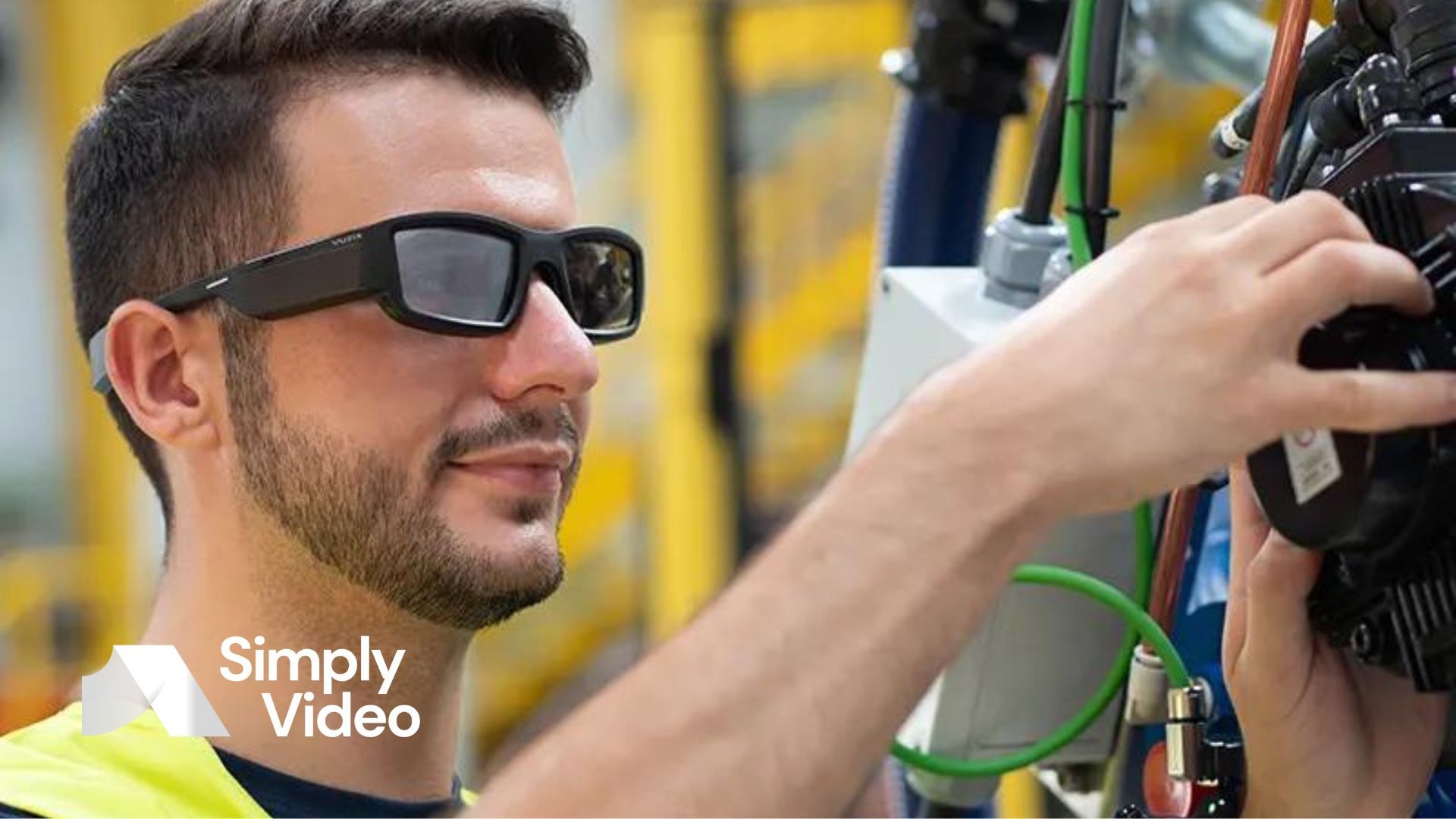What affects bandwidth?
What is bandwidth and what factors can that affect it? Explore the world of bandwidth – and why low-bandwidth video calls can literally save lives.

When we talk about internet usage, two terms are often used interchangeably: "bandwidth" and "speed". But while they both relate to internet performance, they mean quite different things.
For most people, the distinction isn't that important. What matters is that they can use multiple devices in their homes or get a good WiFi connection on the train. It's not hugely important whether it's low bandwidth or low speed that's causing that buffer wheel to spin.
However, when we developed SimplyVideo, we focused on creating an XR-enhanced video call platform that's specifically "low-bandwidth". A platform that, unlike its competitors, can be used pretty much everywhere and isn't constrained by bandwidth limitations.
But what affects bandwidth? Before we answer that question, we need to clarify exactly what it is.
What is bandwidth?
Bandwidth is the maximum amount of data that can be transmitted between devices. It's about capacity, not speed – but we usually experience it in terms of the latter.
In
Easy Rider, two hippies hop on their motorbikes and cruise down the road to a soundtrack of "Born to Be Wild". There's nothing in their way. The road is more than wide enough to accommodate them.
Now picture the same pair trying to get down a narrow country lane. They can do so at the same speed, in theory – but they'll have to go one at a time, so it's going to take longer for them to get through.
In this analogy, the width of the road is bandwidth, and the speed is how fast the bikers can go because of it.
Or consider the conversational way that people use "bandwidth".
Sorry, I can't make that decision now, I don't have the bandwidth. What they're saying is that their brains are overstuffed. Congested. Too much data is being pushed through too narrow a pipe.
So if you have limited bandwidth, it means you can't transmit that much data. The data is being squeezed through a narrow pipe – and the end user experiences this as glitches, freeze outs and the spinning wheel of pain.
Most videoconferencing tools require a lot of data transmission. So if you're making a call in an area or on a device that has limited bandwidth, you're going to get frustrated.
Bandwidth isn't the only thing that can affect the quality of a video call – but it's a big one. That's why SimplyVideo is built for clear picture and audio, whatever the bandwidth.
What affects bandwidth?
In
2020, the average Briton had nine internet devices in their home. Gone are the days of a single desktop computer and a landline phone. Many of us now have tablets, smart TVs, games consoles, smartwatches and devices like Alexa, all of which demand a piece of bandwidth pie.
Bandwidth is finite. If nine devices are all using a single connection, you're going to feel the strain. Your devices will start transferring data at a slower rate and you might experience frozen screens and other annoyances.
However, multiple devices aren't the only cause of congestion. It can be caused by a single device that's running too many internet-based applications. Even a snazzy router won't like it if you're streaming Netflix and downloading a 10-gig file simultaneously.
Some of this internet usage takes place in the background. It's one of the weirder aspects of our digital age. If your gas meter gets upgraded, you have to let someone in and make them a cup of tea. But your devices can update themselves in the background without your input.
Convenient? Yes, but it can affect your bandwidth. More processes can lead to a strain on your capacity which you experience as slowness.
There's also the question of WiFi. Each router has a wireless protocol with its own maximum bandwidth. In turn, this is affected by your device's distance from the router. The closer your device, the higher the bandwidth.
Finally, there are variations between internet connections. Your domestic fixed-line connection will typically have a higher bandwidth than mobile broadband.
Why do we want devices that work at low bandwidth?
Who can benefit from extended reality (XR) devices? It's not just gamers – it's also professionals in a range of industries.
SimplyVideo can provide immersive, memorable training that knocks traditional methods into a cocked hat. It can help medical professionals, from paramedics to surgeons, to save lives. And when connected to a drone, it can provide detailed site surveys that don't put anybody's neck at risk.
So what's the problem? Why can't staff in these situations use one of the big household names like Zoom or Teams?
It all boils down to bandwidth. High-speed, fixed-line broadband up an oil rig is the stuff of fantasy – and a first responder never knows where they'll be sent.
So SimplyVideo is built to deliver the goods in any location.
Let's say you need to train a group of oil rig engineers. You could, of course, fly them out – but that's costly and time-consuming.
With SimplyVideo and an assisted reality headset, trainees can learn from the comfort of their sofas. The trainer can show them the ropes from the oil rig without any sacrifice in video quality.
Or let's say a paramedic arrives at the scene of an emergency. With a SimplyVideo-equipped headset, they can live stream what they see to an expert anywhere in the world.
Getting that expert guidance in the moment can be the difference between life and death. And because of its low-bandwidth model, staff can use it pretty much anywhere.
To cite a final example, this tech can be used to survey sites that are hard and unsafe to reach. By pairing up a drone with SimplyVideo, the top of a building can be live-streamed to a maintenance team – so everyone stays safe.
The bottom line
These are just a few of the ways that SimplyVideo can transform training and business – and it's possible only because it's designed to work in any location, whatever the bandwidth.
Want to find out more about SimplyVideo's low-bandwidth XR video call solution? Learn more about its features or sign up for a free 30-day trial.












